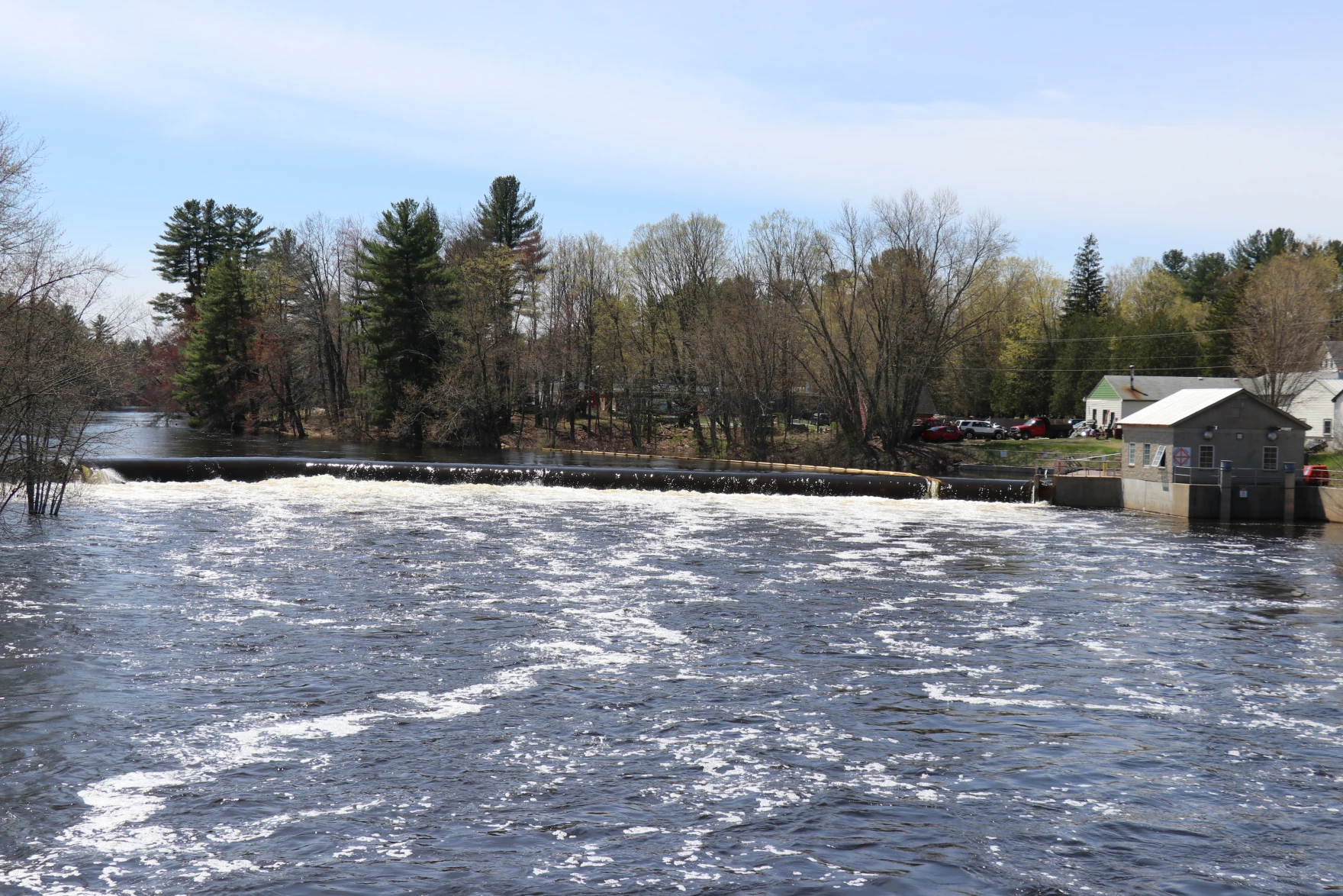Climate change is affecting NH’s streams and rivers. Dartmouth researchers are tracking how.

The Contoocook River in Hopkinton, New Hampshire. (Dan Tuohy / NHPR)
As the climate changes, New Hampshire is getting warmer and wetter. A new study from Dartmouth shows how that could impact local waterways — and how much there still is to learn.
The study explored how things like snowfall, winter rain and springtime snowmelt impact streamflow – the amount of water moving through streams. Being able to project streamflow is important for adapting to climate change, the study said.
The region has seen a large increase in extreme precipitation in the past 30 years, and researchers wanted to see what effects that could have on waterways.
“Streamflow has multiple implications for people — most important is probably flooding,” said Jonathan Winter, a senior author on the study. “So people who live close to streams can end up with flooding for high streamflow. But it also has a lot of implications for our ecosystems – water supply for various plants and animals around the Northeast.”
Dams and hydropower can also be affected by streamflow, as well as the shape of waterways, which can change as sediment, dirt and rocks move through a stream or river.
The study looked at the Dead Diamond river in northern New Hampshire, as well as the Mattawamkeag River in Maine, the White River in Vermont and the Shenandoah River in West Virginia. The three northern rivers are affected strongly by snowmelt, while the Shenandoah river is more affected by rainfall.
Winter said the researchers are relatively confident we can expect higher streamflows and more flooding, particularly during heavy rainfall events in the warm seasons.
City and town planners can take that into consideration, he said, by thinking about putting buildings further away from water bodies, enhancing stormwater management systems to handle bigger flows, or making culverts larger to handle rising waters, so they don’t wash out roads.
In the cold season, the effects of climate change on streamflow are harder to predict. That’s because of the interaction of rain and snow — as the climate changes and winters warm, more winter precipitation could fall as rain.
“It really depends on how these watersheds transition,” Winter said, “between what is now in the winter kind of a snowmelt dominated system to what will be in the future more of a rainfall dominated system.”
This study shows researchers need different modeling techniques to learn about those, Winter said. His team will work on that, shifting away from models that use historical relationships that don’t necessarily apply to a climate-changed future.
